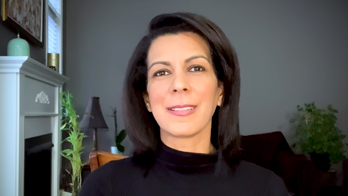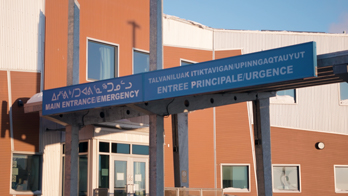After facing personal loss, Dr. Sevtap Savas set out to change how we care for people living with cancer. Her work is helping build lasting support networks for patients, families, and communities after diagnosis
St. John’s, Newfoundland & Labrador - Fighting for better cancer care
Fighting for better cancer care
July 7, 2025
- Share:



Fighting for better cancer care
This video is also available in HD on YouTube. Share it on your social network or embed it into your site.
Transcript: “St. John’s, Newfoundland & Labrador: Fighting for better cancer care”
Video Length: 3:17
An aerial view of the ocean with the words “Immigration Matters” appears across the screen. Under that, the words “In St. John’s, Newfoundland and Labrador” appear on screen.
Sevtap stands on the street with colourful houses behind her. The words, “Sevtap Savas, Cancer scientist & advocate” appear on screen.
Sevtap: When I first arrived Canada, I had no idea that my life and career would take this path.
On a cloudy day, a sign that says “welcome to - bienvenue à St. John’s” is in the middle of the screen while cars drive past on the road.
Sevtap hugs a man and a woman, and then walks down the streets of St. John’s with them. They pass colourful buildings and a painted mural.
Sevtap: Newfoundland and Labrador people are incredibly friendly, incredibly sweet people, and they are always there to help you. To me, there isn’t a better place than Newfoundland and Labrador.
Sevtap walks down a corridor of the university, passing pictures of alumni, then passing a sign that reads “Health Sciences Library.” There is a long shelf of library books and Sevtap is at the end of the shelf, sitting on a chair, reading a book. Sevtap’s award for “Top 25 Canadian Immigrant Award” appears on screen.
Sevtap: I feel incredibly lucky to be able to do both research, advocacy and public engagement and community involvement as a scholar today.
Colourful St. John’s houses appear on screen. Sevtap sits on the couch smiling, looking at a picture, while her cat is perched on the top of the couch. Sevtap appears outside, on a cloudy and foggy day, standing on a rocky crag, looking somber and pensive.
Sevtap: Three years ago my mom got cancer, the last stage, and we weren’t able to do anything and she passed away and I feel incredible guilt as a cancer scientist.
Sevtap walks through the library again and sits on a red chair reading a book about cancer.
Sevtap: But that personal experience with cancer made me extra motivated to improve the cancer patient’s life experiences, medical experiences.
A series of scenes flash across the screen with Sevtap outside, talking with the man and woman, speaking to them while holding a clipboard, walking through the library full of tall shelves of books, and ending with Sevtap reading a book about cancer.
Sevtap: I become interested in social outcomes of cancer patients: how are they treated? Are they marginalized? Are they discriminated? So, guilt can also be used to do something better for other patients and families.
“Teri Stuckless, Cancer survivor” appears on screen, while scenes appear of him sitting on a green couch next to a woman, of Sevtap listening to what Mike is saying on the same green couch, of the group talking outside while smiling, and ending with the group smiling on the green couch.
Teri Stuckless: Since I’ve met Sevtap, I’ve made it my business to become better educated on the topics of cancer and it’s freed me up from the closet that I existed in where I didn’t feel comfortable going out and speaking about it. Cancer is okay to be spoken about and to be shared knowledge on. That’s really the secret to beating cancer. And for that I, in my life, I give full credit to Sevtap Savas.
“Tracey Slaney, Community cancer advocate” appears on screen, while Tracey is standing on a bridge that is surrounded by green trees and shrubbery. Tracey shares her story and scenes appear of her hand holding onto the railing of the bridge, and of Tracey and Sevtap walking and talking on the street together. A close up of Tracey’s face and then a shot of her looking at her smartphone and swiping through pictures of her family appear on screen.
Tracey Slaney: When my spouse got diagnosed I had two kids there, so I had to try to find the positives for them. Sevtap has helped me find my inner strength cause she’s helped me find my inner voice. She has helped shake the taboo all around cancer because I too, for four years, hid in a closet.
Tracey and Sevtap talk and walk down a path covered by leaves between two buildings, then on the side of the road with a pub in the background.
Tracey Slaney: I think Sevtap draws on her own personal battles. She understands the cancer world up close, personal and all too well. She started taking me under her wing and showing me how to advocate effectively.
A sign in front of a brick and glass building appears that says “Medicine”.
“Terri Stuckless, Associate Professor of Oncology at Memorial University” appears on screen, with Terri on the right side of the screen looking in the distance.
Teri Stuckless: I met Sevtap probably about four or five years ago now, and it just blossomed into a research collaboration and partnership over the years since then.
Terri and Sevtap are in a classroom while Sevtap writes “Provincial Cancer Care” on the whiteboard in black marker.
Sevtap sits at a desk, looking at a computer.
Sevtap walks down a corridor where people’s pictures are featured with the words “The Canadian Medical Hall of Fame, Memorial University, Faculty of Medicine” on the wall.
Sevtap talks with Mike outside.
Sevtap’s hand is gesturing towards the words she has written on the white board in black marker. Sevtap and Terri are talking.
Sevtap walks up the stairs. Sevtap types on a keyboard in front of a computer.
Teri Stuckless: What makes her unique is she’s very focused on what I think would be the foundations of a value based health care system. How does treatment x, y, or z provide value to patients in the community, you know? She’s identified shortcomings that we as a program were fairly ignorant to.
Sevtap grabs the railing and proceeds to walk up a long flight of stairs. On the left flight of stairs, the words “Take the next step in your career. Write your story here” appear on each step.
A dedicated service award that Sevtap won appears on screen.
Teri Stuckless: She has been relentless, honestly. Between her public engagement group, the website she’s created to inform the public, communication to the health authority and directors within cancer care. Sevtap has moved the field of patient engagement in cancer research forward a thousand percent.
Sevtap, Tracey and Mike sit on the green couch and talk.
Sevtap speaks at the front of a lecture room to two rows of people.
Sevtap talks to Tracey and Mike outside on the street.
Tracey Slaney: In this space she is seen as a leader, she’s seen as the “know-it-all girl.” If you wanna know anything, you go to Sevtap.
Teri Stuckless: Sevtap has strengthened my belief that no matter what happens, should it return, I’m better prepared to beat it.
Sevtap gestures to the white board with a “Memorial University” sign seen on the left side of the screen.
Sevtap puts on a white lab coat.
Sevtap speaks with a presentation screen behind her.
Sevtap smiles and hugs Tracey and Mike in front of the green couch.
Sevtap’s smiling face appears on the left side of the screen. She is outside on a cloudy and foggy day, with a lighthouse seen in the distance.
Sevtap savas: In this work as a professor, I learned that change doesn’t just come from a lab work or a lecture that I deliver, for example. But it comes from truly hearing each other because this is not just my story, it’s our collective story.
The lighthouse on the edge of a rocky cliff appears with the words “Immigrants enrich our communities” on screen.
The words “Find out how: Canada.ca/immigration-matters” appear on screen.
The Immigration, Refugees and Citizenship Canada corporate signature is shown followed by the Canada wordmark.
Immigration profile: St. John’s, Newfoundland & Labrador
Quick facts:
- Immigrants in St. John’s make up 4% of the population.
- In 2021, health job vacancies in Canada were at a record high of 100,300—up 56.9% from 2019.
- In Canada, immigrants account for 1 out of every 4 workers in the health care sector. Immigrants make up 23% of registered nurses and 35% of nurse aides and related occupations.
Did you know?
- More than 40% of newcomers to Canada between 2016 and 2021 who were working in the health care sector were employed in the important areas of nursing and residential care facilities, as well as home health care services.
You may also be interested in ...
 Enhancing food and beverage shelf life while leading women in STEM
Enhancing food and beverage shelf life while leading women in STEM
Interested in the science of food, Natasha Dhayagude co-founded Chinova Bioworks, a startup made up of 90% women in STEM that’s created jobs in Fredericton.
 Getting personal protective equipment (PPE) to frontline health care workers and vulnerable communities
Getting personal protective equipment (PPE) to frontline health care workers and vulnerable communities
Khadija Cajee, originally from South Africa, co-founded a volunteer organization called Conquer COVID-19. They delivered more than 3 million pieces of personal protective equipment (PPE) to hospitals, homeless shelters and community organizations across Canada.
 Promoting patient care in Iqaluit
Promoting patient care in Iqaluit
Mistaking Baffin Island for Banff brought a qualified nurse to promote continuity of care in Canada’s northern communities.

